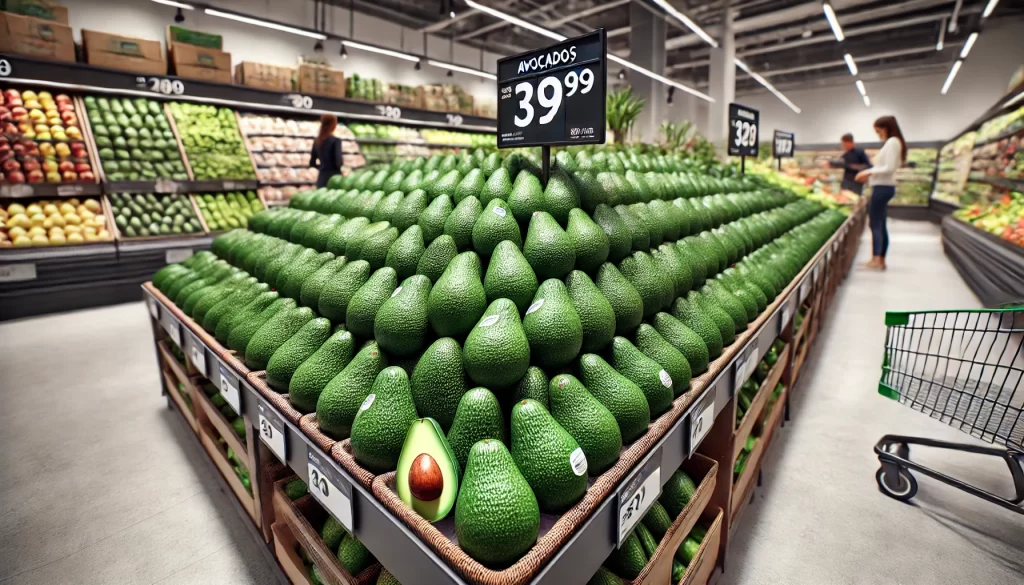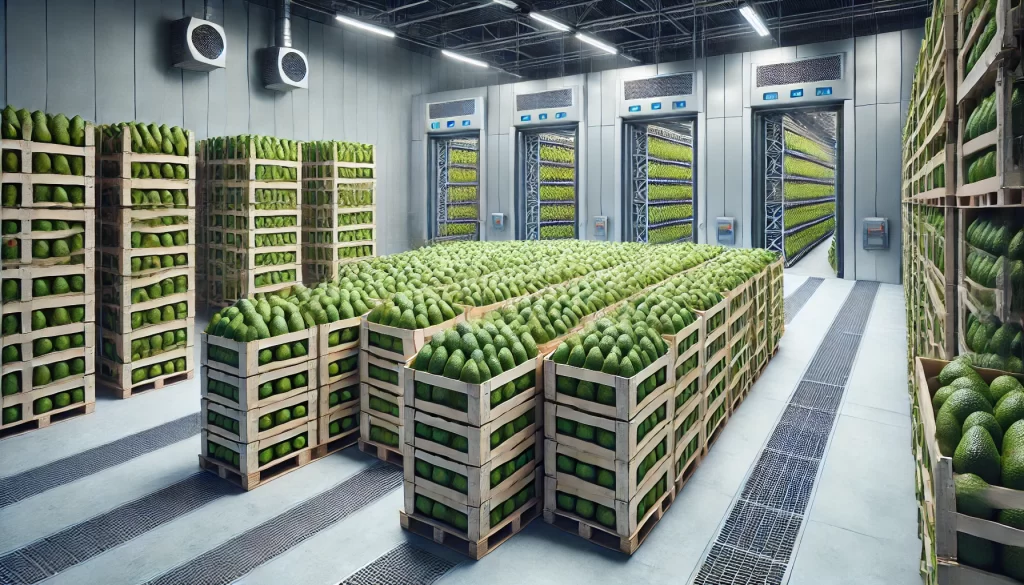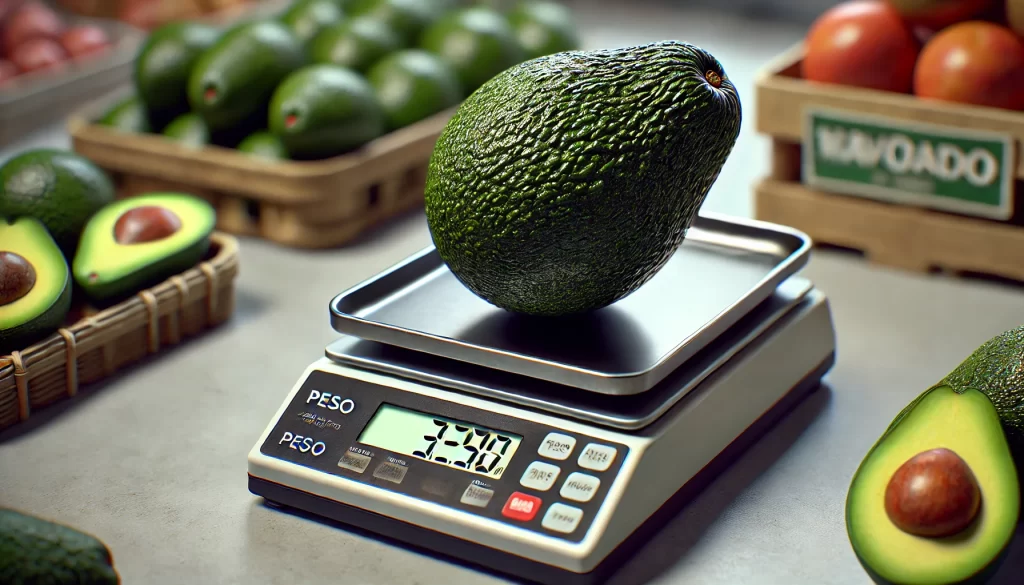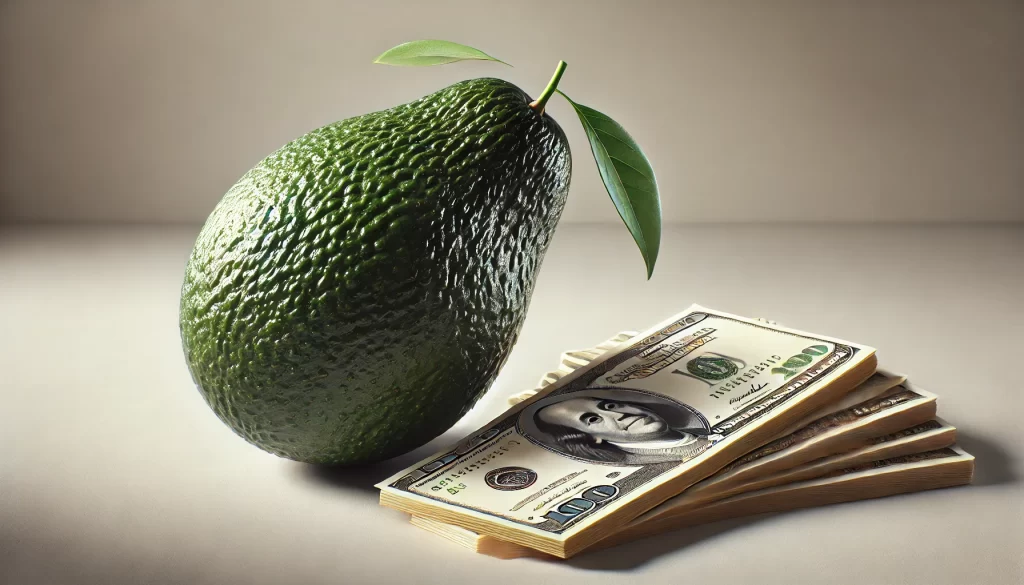The post-harvest process and marketing of avocados are as crucial as crop management itself. The quality of the fruit after harvest largely depends on post-harvest management practices, which include cooling, storage, and transportation. Additionally, understanding market dynamics, consumer trends, and pricing strategies is essential to maximize avocado profitability in domestic and international markets. This article explores best practices for maintaining avocado quality after harvest and provides an overview of global market commercialization.

Post-Harvest Methods: Preserving Avocado Quality
Avocado is a highly perishable fruit, meaning it requires careful handling after harvest to maintain its quality and extend its shelf life.
Harvesting at the Optimal Time
The timing of the harvest is critical to ensuring that the avocado reaches its optimal quality at the time of consumption. It should be harvested when the fruit has reached its physiological maturity, generally determined by the dry matter content and the decrease in the oil index in the pulp.

Immediate Post-Harvest Handling
After harvest, the fruits must be handled with utmost care to avoid mechanical damage, which can lead to bruising and accelerate the ripening and spoilage process.
- Sorting and Grading: The fruits should be sorted according to size, color, and quality. Those with defects or damage should be separated for a secondary market or processing.

Refrigeration: Controlling Ripening
Refrigeration is one of the most effective practices for controlling avocado ripening and extending its shelf life.
- Storage Temperature: Avocados should be stored at temperatures between 5°C and 7°C to slow the ripening process. However, it is important to avoid temperatures below 4°C, as this can cause chilling injuries, such as black spots on the skin and pulp.
Storage and Packaging
Proper storage is key to maintaining avocado quality until final consumption.
- Controlled Atmosphere: In cases where prolonged storage is required, controlled atmosphere (CA) chambers can be used to regulate oxygen and carbon dioxide levels to slow down fruit respiration and prevent spoilage.
- Packaging: Packaging should protect avocados from mechanical damage and maintain good ventilation to avoid ethylene buildup, which can accelerate ripening. The packaging should also be designed to withstand transportation and storage conditions.

Transportation: Maintaining the Cold Chain
Transportation is a critical link in the avocado supply chain, especially for export markets.
- Refrigerated Transport: Avocados should be transported in refrigerated trucks or containers with temperature control to maintain optimal storage conditions during transit. This is especially important for long-distance shipments.
- Handling During Transport: It is crucial to avoid excessive vibrations and impacts during transport to prevent damage to the fruit.

Avocado Marketing: Market Dynamics and Global Opportunities
Avocado marketing has seen significant growth in recent decades, driven by increasing demand in international markets and changing consumer trends.

Export Markets
Avocados are a key export product for many producing countries, such as Mexico, Peru, Chile, and South Africa. These countries supply markets in North America, Europe, and Asia, where demand continues to grow.
- United States: The United States is the largest importer of avocados, with Mexico as its largest supplier. Demand in the U.S. has grown significantly due to the popularity of avocados in healthy diets and the increasing influence of Mexican cuisine.
- Europe: The European market has shown steady growth in avocado consumption, with countries like Spain and the Netherlands serving as important distribution hubs.
- Asia: Emerging markets such as China and Japan are beginning to show greater interest in avocados, representing a significant opportunity for exporters.

Consumer Trends
Avocados have gained worldwide popularity as a superfood due to their high content of healthy fats, vitamins, and minerals. This has driven their consumption in various forms, from guacamole to ingredients in salads, sandwiches, and smoothies.
- Rise of Processed Products: In addition to fresh avocado consumption, there has been an increase in demand for processed products such as ready-to-serve guacamole, avocado oils, and avocado-based cosmetics.
Pricing and Competitiveness
Avocado prices can fluctuate significantly due to factors such as seasonal production, global demand, and weather conditions affecting harvests.
- Pricing Strategies: To remain competitive, producers and exporters must develop pricing strategies that consider production, transportation, and storage costs, as well as market conditions.
- Competitiveness in the Global Market: Competition among producing countries is intense, forcing exporters to focus on improving efficiency and quality to maintain their market share. Quality certification and compliance with international standards are key to accessing the most demanding markets.

Challenges and Opportunities in Avocado Marketing
Avocado marketing faces several challenges but also offers significant opportunities for producers who can adapt to changing market dynamics.
Challenges
- Climate Variability: Changes in weather conditions can affect harvests and, consequently, the availability and price of avocados in international markets.
- International Regulations: Complying with phytosanitary and quality regulations in different markets can be challenging, especially in markets like Europe, where standards are strict.
Opportunities
- Expansion into New Markets: Opening new markets in Asia and the Middle East presents an opportunity to diversify exports and reduce dependence on traditional markets.
- Innovation in Derivative Products: Developing derivative products such as oils and cosmetics can add value and open new business lines for producers.
 AgronoBlog – Agriculture Blog
AgronoBlog – Agriculture Blog 


